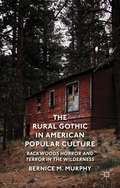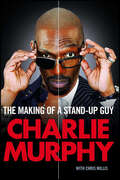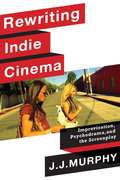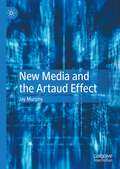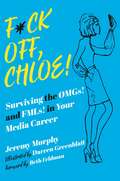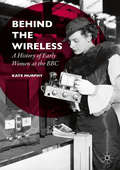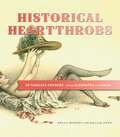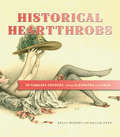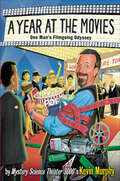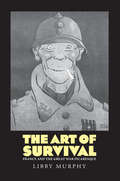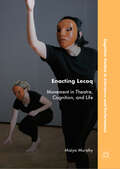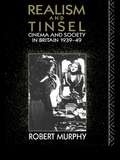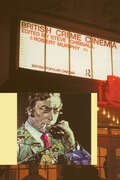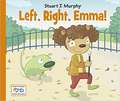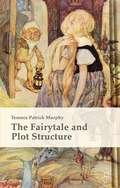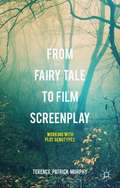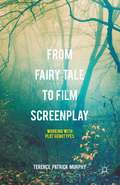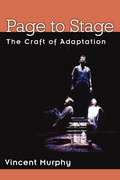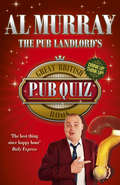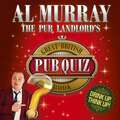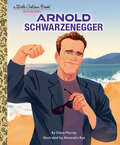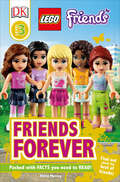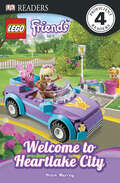- Table View
- List View
The Rural Gothic in American Popular Culture
by Bernice M. MurphyThe Rural Gothic in American Popular Culture argues that complex and often negative initial responses of early European settlers continue to influence American horror and gothic narratives to this day. The book undertakes a detailed analysis of key literary and filmic texts situated within consideration of specific contexts.
The Making of a Stand-Up Guy
by Charlie Murphy Chris MillisAs one of the most popular performers on Comedy Central’s mega-hit The Chappelle Show, Charlie Murphy—older brother of comedy legend Eddie Murphy—shares his passion for comedy and tells his true Hollywood stories in this juicy and highly entertaining memoir.Once described by Chris Rock as “Eddie Murphy on acid,” Charlie Murphy has achieved fame as a recurring performer on the critically acclaimed, three-time Emmy-nominated cult sensation Chappelle’s Show on Comedy Central. Celebrated in particular for his “Charlie Murphy’s True Hollywood Stories” skits, featuring hilarious renditions of Rick James and Prince, Murphy now recounts many of the actual stories that inspired these popular sketches in vivid and comical detail in Doing Time: The Making of a Stand-Up Guy. With his flare for storytelling and his distinctive and fearless voice, it’s no wonder that Charlie Murphy has been the subject of many featured stories in numerous magazines, including GQ, Essence, Rolling Stone, and he was recently listed as one of the Hottest People to Watch in Entertainment Weekly’s “Must List.” Featuring outrageous misadventures as part of his younger brother Eddie’s entourage, and hysterical encounters with numerous celebrities, Doing Time: The Making of a Stand-Up Guy is a fascinating and wildly funny chronicle from one of the most talented comedians today.
Rewriting Indie Cinema: Improvisation, Psychodrama, and the Screenplay (Film and Culture Series)
by J. J. MurphyMost films rely on a script developed in pre-production. Yet beginning in the 1950s and continuing through the recent mumblecore movement, key independent filmmakers have broken with the traditional screenplay. Instead, they have turned to new approaches to scripting that allow for more complex characterization and shift the emphasis from the page to performance.In Rewriting Indie Cinema, J. J. Murphy explores these alternative forms of scripting and how they have shaped American film from the 1950s to the present. He traces a strain of indie cinema that used improvisation and psychodrama, a therapeutic form of improvised acting based on a performer’s own life experiences. Murphy begins in the 1950s and 1960s with John Cassavetes, Shirley Clarke, Barbara Loden, Andy Warhol, Norman Mailer, William Greaves, and other independent directors who sought to create a new type of narrative cinema. In the twenty-first century, filmmakers such as Gus Van Sant, the Safdie brothers, Joe Swanberg, and Sean Baker developed similar strategies, sometimes benefitting from the freedom of digital technology. In reading key films and analyzing their techniques, Rewriting Indie Cinema demonstrates how divergence from the script has blurred the divide between fiction and nonfiction. Showing the ways in which filmmakers have striven to capture the subtleties of everyday behavior, Murphy provides a new history of American indie filmmaking and how it challenges Hollywood industrial practices.
New Media and the Artaud Effect
by Jay MurphyThis book proposes, following Antonin Artaud, an investigation exploring the virtual body, neurology and the brain as fields of contestation, seeking a clearer understanding of Artaud's transformations that ultimately leads into examining the relevance Artaud may have for an adequate theory of the current media environment.New Media and the Artaud Effect is the only current full-length study of the relation of Artaud’s work to dilemmas of digital art, media and society today. It is also singular in that it combines a far-reaching discussion of the theoretical implications and ramifications of the ‘late’ or ‘final’ Artaud, with a treatment of individual media works, sometimes directly inspired from Artaud’s travails.Artaud has long been justly regarded as one of the seminal influences in mid- and late-20th century performance and theater: it is argued here that Artaud’s insights are if anything more applicable to digital/post-digital society and the plethora of works that are made possible by it.
F*ck Off, Chloe!: Surviving the OMGs! and FMLs! in Your Media Career
by Jeremy MurphyA laugh-out-loud account of working in media! Public relations' snarkiest publicist Jeremy Murphy expertly chronicles his hatred, love, indifference, amusement, and scorn for the profession in F*ck Off, Chloe!. From entitled millennials to surly reporters, obnoxious clients, and cumbersome, color-coded &“trackers,&” Murphy takes a scalpel and glass of Châteauneuf-du-Pape to the PR industry in a searing, hilarious, and pissy voice that his own psychiatrist finds &“deeply concerning.&” His collection of annoyances shed light on the industry&’s idiosyncrasies, insanities, contradictions, and past due invoices, providing an illuminating window into the dirty world of public relations not even Xanax can help. Complementing the scathing prose are color-in illustrations by artist Darren Greenblatt, creator of the &“Ugly Lives of Beautiful People&” sketch series.
Behind the Wireless: A History of Early Women at the BBC
by Kate MurphyBehind the Wireless tells the story of women at the BBC in the 1920s and 30s. Broadcasting was brand new in Britain and the BBC developed without many of the overt discriminatory practices commonplace at the time. Women were employed at all levels, except the very top, for instance as secretaries, documentary makers, advertising representatives, and librarians. Three women held Director level posts, Hilda Matheson (Director of Talks), Mary Somerville (Director of School Broadcasting), and Isa Benzie (Foreign Director). Women also produced the programmes aimed at female listeners and brought women broadcasters to the microphone. There was an ethos of equality and the chance to rise through the ranks from accounts clerk to accompanist. But lurking behind the façade of modernity were hidden inequalities in recruitment, pay, and promotion and in 1932 a marriage bar was introduced. Kate Murphy examines how and why the interwar BBC created new opportunities for women.
Historical Heartthrobs: 50 Timeless Crushes — From Cleopatra to Camus
by Kelly Murphy Hallie FrydThis book compiles photos and life stories of fifty of the sexiest men and women from history and asks the essential question: Would you really want to date them? Some are artists, some are scientists, and many are political or military leaders, but all have had a lasting impact on human life—and a sizable impact on their admirers as well. Each entry describes the period in which the heartthrob lived and includes essential stats, hilarious sidebars, and, of course, a "crushability" ranking: a measurement of how crush-worthy these people really are, based on their relative levels of heroism (or villainy).
Historical Heartthrobs
by Kelly Murphy Hallie FrydHistory is about much more than dusty books, dreary dates, and long-forgotten battles. History is also about sex appeal! Historical Heartthrobs compiles photos and life stories of 50 of the sexiest men and women from history and asks the essential question: Would you really want to date them? Consider George Sand, for instance. She was the hottest thing in pants in nineteenth-century France, but would you really want to put up with all that smoking? Or what about Nikola Tesla? His utter brilliance made Victorians swoon, but he seemed incapable of swooning back. Would you endure his indifference in return for that incredible smile? Each entry in Historical Heartthrobs includes a full-page photo, contemporary quotes, and an in-depth explanation of who these people were, why they mattered, and how they managed to be so seductive. Entries also include: Vital stats about the hottie's place of birth, lifespan, and major areas of influence. The inside scoop on peccadilloes, noteworthy liaisons, and long-standing relationships. An overall heat reading that factors in sex appeal, charisma, accomplishments, and of course, moral virtue. (Points are docked for brutality and rudeness!) Everyone included here made their mark on the world--but not everyone did so in an equally admirable fashion. John Wilkes Booth was definitely good-looking, but racist assassins don't generally make for the best life partners. Nellie Bly, on the other hand, did more in her average year than most people do in a lifetime--and she happened to look like a model, too. So review their records, check out their photos, and choose the hottie who makes you swoon.
A Year at the Movies: One Man's Filmgoing Odyssey
by Kevin MurphyFor some of us, moviegoing is an occasional pleasure. Kevin Murphy made it his obsession, and he did it for you.Mr. Murphy, known to legions of fans as Tom Servo on the legendary TV series Mystery Science Theater 3000, went to the movies every day for a year. That's every single day, people. For a whole fricken' year. And not only did he endure, he prevailed -- for this is the hilarious, poignant, fascinating journal of his adventures: the first book about the movies from the audience's point of view.Kevin went to the multiplex, sure. But he didn't stop there. He found the world's smallest commercial movie theater. Another one made completely of ice. Checked out flicks in a tin-roofed hut in the South Pacific. Tooled across the desert from drive-in to drive-in in a groovy convertible. Lived for a week solely on theater food. Took six different women to the same date movie. Dressed up as a nun for the Sing-Along Sound of Music in London. Sneaked into the Cannes and Sundance film festivals. Smuggled an entire Thanksgiving dinner into a movie theater. And saw hundreds of films, from the Arctic Circle to the Equator, from the sublime to the unspeakable. Come along on a joyous global celebration of the cinema with a man on a mission -- to spend A Year at the Movies.
The Art of Survival: France and the Great War Picaresque
by Libby MurphyAn astute literary and cultural history of World War I in France that offers a fresh perspective on the popular culture of the Great War The First World War soldier has often been depicted as a helpless victim sacrificed by a ruthless society in the trenches of the Western Front. In fact, Libby Murphy reveals, French soldiers drew upon a long-standing European tradition to imagine themselves not as heroes or victims but as survivors. Murphy investigates how infantrymen and civilians attempted to make sense of the war while it was still in progress by reviving the picaresque, a literary mode in which unheroic protagonists are forced to fend for themselves in a chaotic and hostile world. By examining works by French and European novelists, journalists, graphic artists, cultural critics, and filmmakers--including Charlie Chaplin--Libby Murphy shows how the rich tradition of the European picaresque was uniquely appropriate for expressing anxieties provoked by modern, industrialized warfare.
Enacting Lecoq: Movement In Theatre, Cognition, And Life (Cognitive Studies In Literature And Performance Ser.)
by Maiya MurphyThis book examines the theatrical movement-based pedagogy of Jacques Lecoq (1921-1999) through the lens of the cognitive scientific paradigm of enaction. The conversation between these two both uncovers more of the possible cognitive processes at work in Lecoq pedagogy and proposes how Lecoq’s own practical and philosophical approach could have something to offer the development of the enactive paradigm. Understanding Lecoq pedagogy through enaction can shed new light on the ways that movement, key to Lecoq’s own articulation of his pedagogy, might cognitively constitute the development of Lecoq’s ultimate creative figure – the actor-creator. Through an enactive lens, the actor-creator can be understood as not only a creative figure, but also the manifestation of a fundamentally new mode of cognitive selfhood. This book engages with Lecoq pedagogy’s significant practices and principles including the relationship between the instructor and student, identifications, mime, play, mask work, language, improvisation, and movement analysis.
Realism and Tinsel: Cinema and Society in Britain 1939-48 (Cinema and Society)
by Robert MurphyFirst published in 1992. Routledge is an imprint of Taylor & Francis, an informa company.
British Crime Cinema (British Popular Cinema)
by Robert Murphy Steve ChibnallThis is the first substantial study of British cinema's most neglected genre. Bringing together original work from some of the leading writers on British popular film, this book includes interviews with key directors Mike Hodges (Get Carter) and Donald Cammel (Performance). It discusses an abundance of films including:* acclaimed recent crime films such as Shallow Grave, Shopping, and Face.* early classics like They Made Me A Fugitive* acknowledged classics such as Brighton Rock and The Long Good Friday* 50s seminal works including The Lavender Hill Mob and The Ladykillers.
Left Right Emma! (I See I Learn #9)
by Stuart J. MurphyAfter learning the concept of left and right, Emma leads the class marching band on Grandparents Day.
From Fairy Tale to Film Screenplay: Working with Plot Genotypes
by Terence Patrick MurphyIn Screenplay: The Foundations of Screenwriting (1979), Syd Field first popularized the Three-Act Paradigm of Setup, Confrontation and Resolution for conceptualizing and creating the Hollywood screenplay. For Field, the budding screenwriter needs a clear screenplay structure, one which includes two well-crafted plot points, the first at the end of Act I, the second at the end of Act II. By focusing on the importance of the four essentials of beginning and end, and the two pivotal plot points, Field did the Hollywood film industry an enormous service. Nonetheless, although he handles the issue of overall structure expertly, Field falls down when offering the screenwriter advice on how to successfully build each of the three individual Acts. This is because Field did not recognize the importance of another layer of analysis that underpins the existence of plot points. This is the level of the plot genotype.This book will offer you a richer theory of plot structure than the one Field outlines. It will do this not by contradicting anything Field has to say about the Hollywood paradigm, but by complementing it with a deeper level of analysis. Plot genotypes are the compositional schemas of particular stories. They are sets of instructions, written in the language of the plot function, for executing particular plots. This book outlines the plot genotypes for The Frog Prince, The Robber Bridegroom, Puss-in-Boots, and Little Red Riding Hood and then shows how these genotypes provide the underpinnings for the film screenplays of Pretty Woman, Wrong Turn, The Mask, and Psycho. By means of a detailed study of these four Hollywood screenplays, you will be able to offer a much richer description of what is going on at any particular point in a screenplay. In this way, you will become much sharper at understanding how screenplays work. And you will become much better at learning how to write coherent screenplays yourself.
From Fairy Tale to Film Screenplay: Working with Plot Genotypes
by Terence Patrick MurphyIn Screenplay: The Foundations of Screenwriting (1979), Syd Field first popularized the Three-Act Paradigm of Setup, Confrontation and Resolution for conceptualizing and creating the Hollywood screenplay. For Field, the budding screenwriter needs a clear screenplay structure, one which includes two well-crafted plot points, the first at the end of Act I, the second at the end of Act II. By focusing on the importance of the four essentials of beginning and end, and the two pivotal plot points, Field did the Hollywood film industry an enormous service. Nonetheless, although he handles the issue of overall structure expertly, Field falls down when offering the screenwriter advice on how to successfully build each of the three individual Acts. This is because Field did not recognize the importance of another layer of analysis that underpins the existence of plot points. This is the level of the plot genotype.This book will offer you a richer theory of plot structure than the one Field outlines. It will do this not by contradicting anything Field has to say about the Hollywood paradigm, but by complementing it with a deeper level of analysis. Plot genotypes are the compositional schemas of particular stories. They are sets of instructions, written in the language of the plot function, for executing particular plots. This book outlines the plot genotypes for The Frog Prince, The Robber Bridegroom, Puss-in-Boots, and Little Red Riding Hood and then shows how these genotypes provide the underpinnings for the film screenplays of Pretty Woman, Wrong Turn, The Mask, and Psycho. By means of a detailed study of these four Hollywood screenplays, you will be able to offer a much richer description of what is going on at any particular point in a screenplay. In this way, you will become much sharper at understanding how screenplays work. And you will become much better at learning how to write coherent screenplays yourself.
Page to Stage: The Craft of Adaptation
by Vincent MurphyAt last, for those who adapt literature into scripts, a how-to book that illuminates the process of creating a stageworthy play. Page to Stage describes the essential steps for constructing adaptations for any theatrical venue, from the college classroom to a professionally produced production. Acclaimed director Vincent Murphy offers students in theater, literary studies, and creative writing a clear and easy-to-use guidebook on adaptation. Its step-by-step process will be valuable to professional theater artists as well, and for script writers in any medium. Murphy defines six essential building blocks and strategies for a successful adaptation, including theme, dialogue, character, imagery, storyline, and action. Exercises at the end of each chapter lead readers through the transformation process, from choosing their material to creating their own adaptations. The book provides case studies of successful adaptations, including The Grapes of Wrath (adaptation by Frank Galati) and the author's own adaptations of stories by Samuel Beckett and John Barth. Also included is practical information on building collaborative relationships, acquiring rights, and getting your adaptation produced.
The Pub Landlord's Great British Pub Quiz Book
by Al MurrayWho invented the pub quiz? The British, of course! Who doesn?t enjoy a rousing question-and-answer session over a pint and some scratchings? Indeed, what higher calling is there than standing in the pub loudly demanding answers to difficult questions like `d'you want some?? Here, for your pleasure, Britain?s leading pub landlord, The Pub Landlord, presents the finest collection of facts imaginable. Enjoy the attention of friends and strangers by revealing how many James Bonds there were, how many times the French have capitulated and exactly how long those pickled eggs have been in that jar on the bar. The ladies love a well-read man and this book will give you the tools needed to impress her (don?t worry, answers are included). None of your French-type philosophical musings here. No, this is a proper quiz for the Great British Public. In a public house. Or your living room.
The Pub Landlord's Great British Pub Quiz Book
by Al MurrayWho invented the pub quiz?The British, of course!Who doesn't enjoy a rousing question-and-answer session over a pint and some scratchings? Indeed, what higher calling is there than standing in the pub loudly demanding answers to difficult questions like 'd'you want some?' Here, for your pleasure, Britain's leading pub landlord, The Pub Landlord, presents the finest collection of facts imaginable. Enjoy the attention of friends and strangers by revealing how many James Bonds there were, how many times the French have capitulated and exactly how long those pickled eggs have been in that jar on the bar.The ladies love a well-read man and this book will give you the tools needed to impress her (don't worry, answers are included). None of your French-type philosophical musings here. No, this is a proper quiz for the Great British Public. In a public house. Or your living room.(P)2010 Hodder & Stoughton
Arnold Schwarzenegger: A Little Golden Book Biography (Little Golden Book)
by Diana MurrayHelp your little one dream big with a Little Golden Book biography about body-builder, movie star, and politician Arnold Schwarzenegger. Little Golden Book biographies are the perfect introduction to nonfiction for young readers—as well as fans of all ages!This Little Golden Book about Arnold Schwarzenegger--an immigrant from Austria who achieved the American dream and became Mr. Universe, an action movie icon, and the governor of California--is an inspiring read-aloud for young children and Terminator fans of any age. Look for more Little Golden Book biographies: • Betty White • Carol Burnett • Lucille Ball • Harry Belafonte • Julie Andrews • Dwayne Johnson
DK Readers L3: Find Out About the Best of Friends! (DK Readers Level 3)
by Helen MurrayGo on a reading adventure with the LEGO® Friends!Meet Olivia and her best friends Mia, Emma, Andrea, and Stephanie. Explore their beautiful home, Heartlake City, and enjoy many adventures along the way!Engaging topics and fun, interactive pages build reading skills in this Level 3 Reader – just right for children who are beginning to read on their own. A fun quiz at the end of the book helps to develop reading comprehension skills. Each title in the DK Readers series is developed in consultation with leading literacy experts to help children build a lifelong love of reading.©2012 The LEGO Group.
DK Readers L3: Find Out About the Best of Friends! (DK Readers Level 3)
by Helen MurrayGo on a reading adventure with the LEGO® Friends!Meet Olivia and her best friends Mia, Emma, Andrea, and Stephanie. Explore their beautiful home, Heartlake City, and enjoy many adventures along the way!Engaging topics and fun, interactive pages build reading skills in this Level 3 Reader – just right for children who are beginning to read on their own. A fun quiz at the end of the book helps to develop reading comprehension skills. Each title in the DK Readers series is developed in consultation with leading literacy experts to help children build a lifelong love of reading.©2012 The LEGO Group.
DK Readers L4: LEGO Friends: Welcome to Heartlake City (DK Readers Level 4)
by Helen MurrayGo on a reading adventure with the LEGO® Friends!Come explore Heartlake City with Emma, Mia, Andrea, Stephanie, and Olivia. Take a tour of the amazing places in Heartlake City and meet some of the adorable animals that live there.Engaging topics and fun, interactive pages build reading skills in this Level 4 Reader – just right for children who can read alone. A fun quiz at the end of the book helps to develop reading comprehension skills. Each title in the DK Readers series is developed in consultation with leading literacy experts to help children build a lifelong love of reading.©2012 The LEGO Group.
